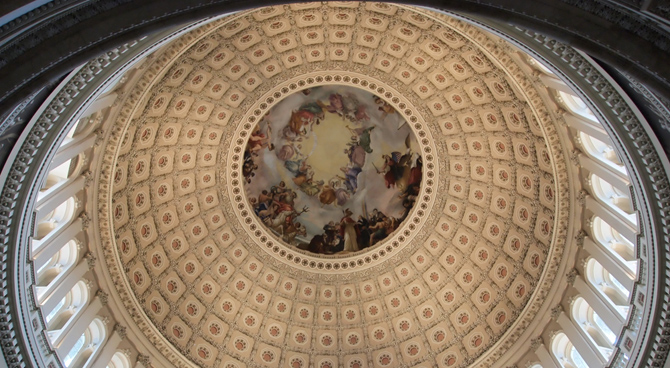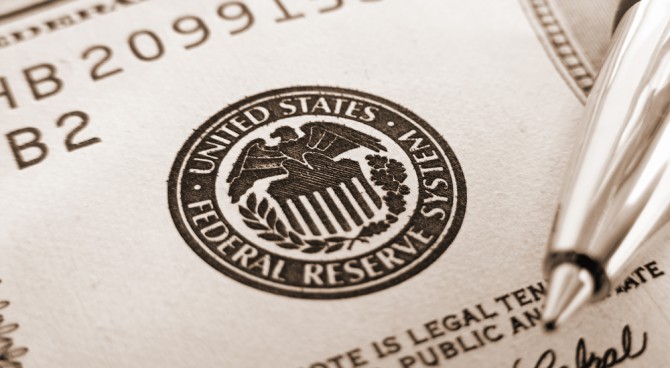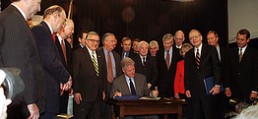Loose money and politicized mortgages are the real villains.
February 20, 2009
If the cause was an unsustainable boom in house prices and irresponsible mortgage lending that corrupted the balance sheets of the world’s financial institutions, reforming the housing credit system and correcting attendant problems in the financial system are called for. But if the fundamental structure of the financial system is flawed, a more profound restructuring is required.
I believe that a strong case can be made that the financial crisis stemmed from a confluence of two factors. The first was the unintended consequences of a monetary policy, developed to combat inventory cycle recessions in the last half of the 20th century, that was not well suited to the speculative bubble recession of 2001. The second was the politicization of mortgage lending.
The 2001 recession was brought on when a speculative bubble in the equity market burst, causing investment to collapse. But unlike previous postwar recessions, consumption and the housing industry remained strong at the trough of the recession. Critics of Federal Reserve Chairman Alan Greenspan say he held interest rates too low for too long, and in the process overstimulated the economy. That criticism does not capture what went wrong, however. The consequences of the Fed’s monetary policy lay elsewhere.
In the inventory-cycle recessions experienced in the last half of the 20th century, involuntary build up of inventories produced retrenchment in the production chain. Workers were laid off and investment and consumption, including the housing sector, slumped.
In the 2001 recession, however, consumption and home building remained strong as investment collapsed. The Fed’s sharp, prolonged reduction in interest rates stimulated a housing market that was already booming — triggering six years of double-digit increases in housing prices during a period when the general inflation rate was low.
Buyers bought houses they couldn’t afford, believing they could refinance in the future and benefit from the ongoing appreciation. Lenders assumed that even if everything else went wrong, properties could still be sold for more than they cost and the loan could be repaid. This mentality permeated the market from the originator to the holder of securitized mortgages, from the rating agency to the financial regulator.
Meanwhile, mortgage lending was becoming increasingly politicized. Community Reinvestment Act (CRA) requirements led regulators to foster looser underwriting and encouraged the making of more and more marginal loans. Looser underwriting standards spread beyond subprime to the whole housing market.
As Mr. Greenspan testified last October at a hearing of the House Committee on Oversight and Government Reform, “It’s instructive to go back to the early stages of the subprime market, which has essentially emerged out of CRA.” It was not just that CRA and federal housing policy pressured lenders to make risky loans — but that they gave lenders the excuse and the regulatory cover.
Countrywide Financial Corp. cloaked itself in righteousness and silenced any troubled regulator by being the first mortgage lender to sign a HUD “Declaration of Fair Lending Principles and Practices.” Given privileged status by Fannie Mae as a reward for “the most flexible underwriting criteria,” it became the world’s largest mortgage lender — until it became the first major casualty of the financial crisis.
The 1992 Housing Bill set quotas or “targets” that Fannie and Freddie were to achieve in meeting the housing needs of low- and moderate-income Americans. In 1995 HUD raised the primary quota for low- and moderate-income housing loans from the 30% set by Congress in 1992 to 40% in 1996 and to 42% in 1997.
By the time the housing market collapsed, Fannie and Freddie faced three quotas. The first was for mortgages to individuals with below-average income, set at 56% of their overall mortgage holdings. The second targeted families with incomes at or below 60% of area median income, set at 27% of their holdings. The third targeted geographic areas deemed to be underserved, set at 35%.
The results? In 1994, 4.5% of the mortgage market was subprime and 31% of those subprime loans were securitized. By 2006, 20.1% of the entire mortgage market was subprime and 81% of those loans were securitized. The Congressional Budget Office now estimates that GSE losses will cost $240 billion in fiscal year 2009. If this crisis proves nothing else, it proves you cannot help people by lending them more money than they can pay back.
Blinded by the experience of the postwar period, where aggregate housing prices had never declined on an annual basis, and using the last 20 years as a measure of the norm, rating agencies and regulators viewed securitized mortgages, even subprime and undocumented Alt-A mortgages, as embodying little risk. It was not that regulators were not empowered; it was that they were not alarmed.
With near universal approval of regulators world-wide, these securities were injected into the arteries of the world’s financial system. When the bubble burst, the financial system lost the indispensable ingredients of confidence and trust. We all know the rest of the story.
The principal alternative to the politicization of mortgage lending and bad monetary policy as causes of the financial crisis is deregulation. How deregulation caused the crisis has never been specifically explained. Nevertheless, two laws are most often blamed: the Gramm-Leach-Bliley (GLB) Act of 1999 and the Commodity Futures Modernization Act of 2000.
GLB repealed part of the Great Depression era Glass-Steagall Act, and allowed banks, securities companies and insurance companies to affiliate under a Financial Services Holding Company. It seems clear that if GLB was the problem, the crisis would have been expected to have originated in Europe where they never had Glass-Steagall requirements to begin with. Also, the financial firms that failed in this crisis, like Lehman, were the least diversified and the ones that survived, like J.P. Morgan, were the most diversified.
Moreover, GLB didn’t deregulate anything. It established the Federal Reserve as a superregulator, overseeing all Financial Services Holding Companies. All activities of financial institutions continued to be regulated on a functional basis by the regulators that had regulated those activities prior to GLB.
When no evidence was ever presented to link GLB to the financial crisis — and when former President Bill Clinton gave a spirited defense of this law, which he signed — proponents of the deregulation thesis turned to the Commodity Futures Modernization Act (CFMA), and specifically to credit default swaps.
Yet it is amazing how well the market for credit default swaps has functioned during the financial crisis. That market has never lost liquidity and the default rate has been low, given the general state of the underlying assets. In any case, the CFMA did not deregulate credit default swaps. All swaps were given legal certainty by clarifying that swaps were not futures, but remained subject to regulation just as before based on who issued the swap and the nature of the underlying contracts.
In reality the financial “deregulation” of the last two decades has been greatly exaggerated. As the housing crisis mounted, financial regulators had more power, larger budgets and more personnel than ever. And yet, with the notable exception of Mr. Greenspan’s warning about the risk posed by the massive mortgage holdings of Fannie and Freddie, regulators seemed unalarmed as the crisis grew. There is absolutely no evidence that if financial regulators had had more resources or more authority that anything would have been different.
Since politicization of the mortgage market was a primary cause of this crisis, we should be especially careful to prevent the politicization of the banks that have been given taxpayer assistance. Did Citi really change its view on mortgage cram-downs or was it pressured? How much pressure was really applied to force Bank of America to go through with the Merrill acquisition?
Restrictions on executive compensation are good fun for politicians, but they are just one step removed from politicians telling banks who to lend to and for what. We have been down that road before, and we know where it leads.
Finally, it should give us pause in responding to the financial crisis of today to realize that this crisis itself was in part an unintended consequence of the monetary policy we employed to deal with the previous recession. Surely, unintended consequences are a real danger when the monetary base has been bloated by a doubling of the Federal Reserve’s balance sheet, and the federal deficit seems destined to exceed $1.7 trillion.
Mr. Gramm, a former U.S. Senator from Texas, is vice chairman of UBS Investment Bank. This op-ed is adapted from a recent paper he delivered at the American Enterprise Institute.





